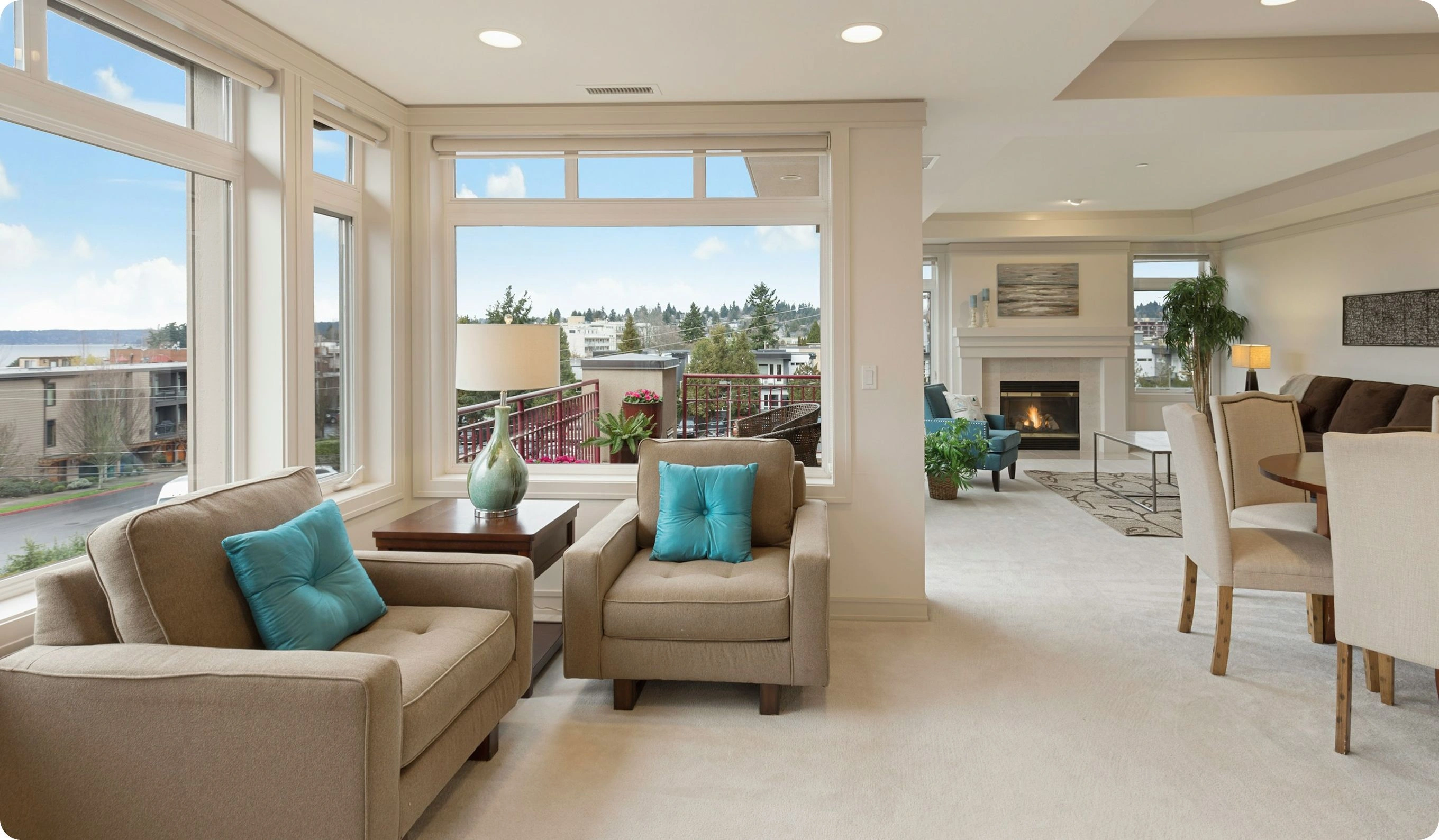خانههای ثانویه برای فروش در تواماسینازندگی در کنار دریا نزدیک به اسکلهها،بازارها و صداهای اطراف

بهترین پیشنهادات
در تواماسینا
Benefits of investment in
Madagascar real estate
Exotic destination with unique appeal
Coastal and eco-tourism areas attract attention from lifestyle buyers and long-stay travelers.
Opportunities in boutique hospitality
Development potential exists for eco-lodges, guesthouses, and resort-style homes.
Natural beauty with long-term potential
Unspoiled landscapes add intrinsic value to well-located properties.
Exotic destination with unique appeal
Coastal and eco-tourism areas attract attention from lifestyle buyers and long-stay travelers.
Opportunities in boutique hospitality
Development potential exists for eco-lodges, guesthouses, and resort-style homes.
Natural beauty with long-term potential
Unspoiled landscapes add intrinsic value to well-located properties.

مقالات مفید
و توصیههایی از متخصصان
Why Secondary Real Estate in Toamasina Offers Coastal Investment Appeal
Toamasina (formerly Tamatave), Madagascar’s primary eastern port on the Indian Ocean, combines tropical harborfront living with thriving commerce—making its resale property market compelling for English-speaking investors. Secondary real estate in Toamasina—including colonial-era villas on Boulevard Joffre, seaside apartments in Amboditsiry, and modern townhouse complexes in Antsahavola—trades at 15–30% below comparable new developments. Buyers benefit from immediate occupancy, diversified tenant pools of port staff, NGO teams, and eco-tourism operators, plus secure title transfers through Madagascar’s land registry. With moderate closing costs, no ownership restrictions for foreigners, and rental yields fueled by maritime logistics and coastal tourism, Toamasina’s resale sector blends practical returns with laid-back seaside living.
Historic Quarters & Harbor-front Rentals
Boulevard Joffre & Ville B showcase Toamasina’s French-colonial legacy. Resale villas and patio-style flats—often retaining high-ceilings, shuttered windows, and narrow verandas—yield 5–7% gross when leased to senior port executives, maritime consultants, and diplomatic delegations. Investors negotiating credits for façade repainting, roof repairs, and modernization of plumbing and electrical systems can command 15–20% higher rents, leveraging heritage charm alongside functional upgrades.
Near the harbor, Amboditsiry offers mid-century apartment blocks just steps from the quay. Resale flats here trade at steep discounts relative to central Antananarivo yet generate 6–8% yields on long-term leases to NGO staff, customs agents, and port-operations personnel. Simple enhancements—installing split-air conditioning, upgrading kitchen cabinetry, or adding secure entry—can lift rents by up to 20%, while proximity to ferry services and cargo terminals ensures occupancy above 90%.
Modern Suburbs & Vacation-Rental Opportunities
Toamasina’s expanding suburbs—Antsahavola and Antanimena—host newer gated-community townhouses and low-rise condo developments built since 2010. These turnkey resale units yield 4–5% gross to long-stay expatriate families, medical volunteers at the regional clinic, and project teams working on coastal-protection initiatives. Buyers who secure seller credits for landscaping communal courtyards, adding rooftop terraces, or installing solar-powered water heaters can justify rent increases of 10–15% and attract eco-tourism guests during whale-watching season.
Along the Plage Amboditsiry corridor, beachfront bungalows and villas—once staff housing for colonial era officers—offer hybrid rental models. Short-stay yields of 8–10% arise from holiday-let guests drawn by coral reefs and surf breaks, while long-term leases to dive-shop operators and fishing-charter crews sustain occupancy year-round. Value-add improvements—renovating decks, reinforcing storm-proof shutters, or converting garages into guest suites—can drive blended yields of 7–9%.
Legal, Tax, and Financing Essentials for Foreign Buyers
Foreign nationals acquire secondary real estate in Toamasina via notarized sale agreements registered at the Madagascar Land Registry (Bureau des Domaines) in Antananarivo or the local sub-registry branch. Closing costs average 3–5% of sale value, covering notary fees (1%), registration duties (1–2%), and agent commissions (1–2%). Madagascar imposes no restrictions on non-resident ownership of residential property, and annual property taxes remain below 0.5% of assessed value, providing predictable holding costs.
While local bank financing for non-residents is limited, all-cash purchases prevail. Overseas investors often arrange private bridge loans through Paris or Mauritius and then refinance through Malagasy banks (BNI Madagascar, BMOI) once residency permits and proof of stable rental income are established. Engaging a bilingual local attorney is essential for due-diligence: verifying clear title, confirming cadastral boundaries, and ensuring compliance with zoning rules—especially critical along erosion-prone coastal stretches.
Capital-gains tax is set at a flat 10% for properties sold within two years of acquisition, with exemptions thereafter. No inheritance tax simplifies intergenerational transfers. Short-stay operators must register rental properties with the Ministry of Tourism and adhere to health-and-safety inspections, typically overseen by the Toamasina regional tourism office.
Toamasina’s port expansions and highway upgrades further enhance resale values. The newly deepened container channel and upgraded rail link to Antananarivo cut freight transit times by 30%, elevating demand—and resale premiums of 5–7%—for properties near Boulevard Jean Laborde and the Port Authority quarters. The RN5 coastal highway improvements to Mahambo and Foulpointe support beach-town commuter flows, boosting appeal for villas along the north-coast corridor.
Tenant demand remains robust: long-term leases by port and logistics professionals, NGO field teams engaged in coastal-ecosystem projects, and academic staff at the University of Toamasina foster stable occupancy. Short-stay rentals peak during carnival season and waterfront festivals—such as the Toamasina Music Festival—drawing as much as 90% occupancy for serviced flats near the Boulevard Joffre promenade. Professional property managers in Toamasina coordinate guest services, maintenance scheduling, and transparent financial reporting—enabling remote owners to enjoy largely passive income streams.
Emerging micro-niches include converting underutilized flats in the City Market district into artisan-themed co-living studios—achieving blended yields of 8–10%—and targeting hillside villas near the Pointes des Roches lookout for wellness-retreat packages that combine lodging with guided nature-walk experiences. By aligning acquisitions with port development timelines, understanding Toamasina’s diverse neighborhood dynamics, and leveraging Madagascar’s open ownership laws, global investors can secure both coastal-lifestyle experiences and sustainable returns in this strategic Indian-Ocean gateway.
